Tom's Hardware Verdict
MSI’s GTX 1660 Super Gaming X is a capable 1080p and 1440p performer. But the recently released RX 5600 XT is a better option for most people, performing significantly better for just $10 more.
Pros
- +
Achieves 60fps at 1080p ultra / 1440p medium on most titles
- +
Twin Frozr 7 cooling is quiet and effective
- +
Zero Frozr (fan off) capability at idle / low loads
Cons
- -
Expensive compared to most other GTX 1660 Supers
- -
AMD Radeon RX 5600 XT performs better at a similar price
Why you can trust Tom's Hardware
MSI and other card partners typically have several different SKUs of the same card. These range from reference models with branded stickers to high-end models with improved power delivery and custom cooling. The premium models typically offer some kind of improvement over the reference spec, be it performance, cooling, acoustics or all of the above. In that light, MSI’s GTX 1660 Super Gaming X card sits at the top of the stack for MSI's GTX 1660 Super options, but how does it rank among the best graphics cards in its class?
The card comes with a factory overclock, more robust power delivery, as well as the Twin Frozr 7 thermal design to keep things cool. Pricing on this card is $269.99 at Newegg and is close to the high end of GTX 1660 Supers, which currently start at at $230. But with AMD’s new Radeon RX 5600 XT now delivering 2060-class performance while occupying the $279-plus price band, the $250-$300 market becomes quite a busy, complicated space.
As with most mid-range and lower-end cards, Nvidia offered reference specifications but not an actual reference/Founder’s Edition card for the 1660 Super. So it's up to the board partners to do as they wish (within reason of course) with clocks speeds, power delivery and cooling solutions. With this Gaming X, power is delivered via a single 8-pin connector, and is full size (it's 9.7 inches long) but should fit into most builds.
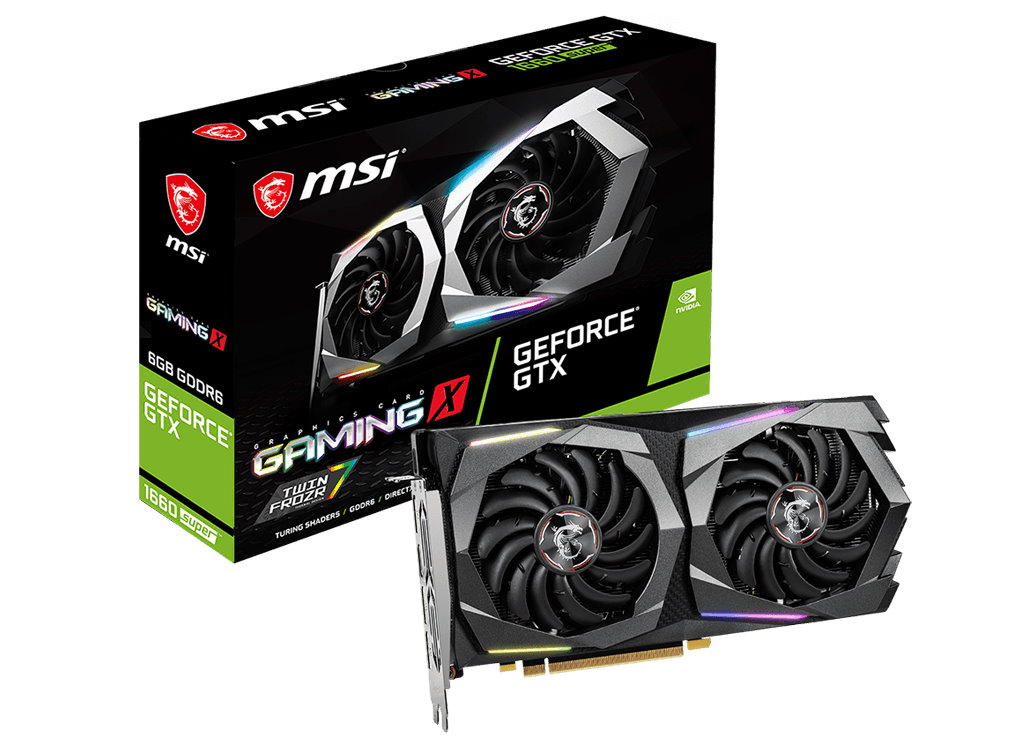
Features
The GTX 1660 Super is based on the Turing architecture and uses the TU116 GPU found in the GTX 1660 and 1660 Ti. The GTX naming, as opposed to RTX, tells us there is no support for ray tracing. The TU116 die is manufactured using the 12nm FFN (FinFET Nvidia) process and made by TSMC. The GPU consists of 6.6 billion transistors with a die size of 284 mm squared. The GTX 1660 Super has 1,408 shaders, 88 TMUs, and 48 ROPs, which is trimmed down from the full version (1,536/96/48) found in the GTX 1660 Ti.
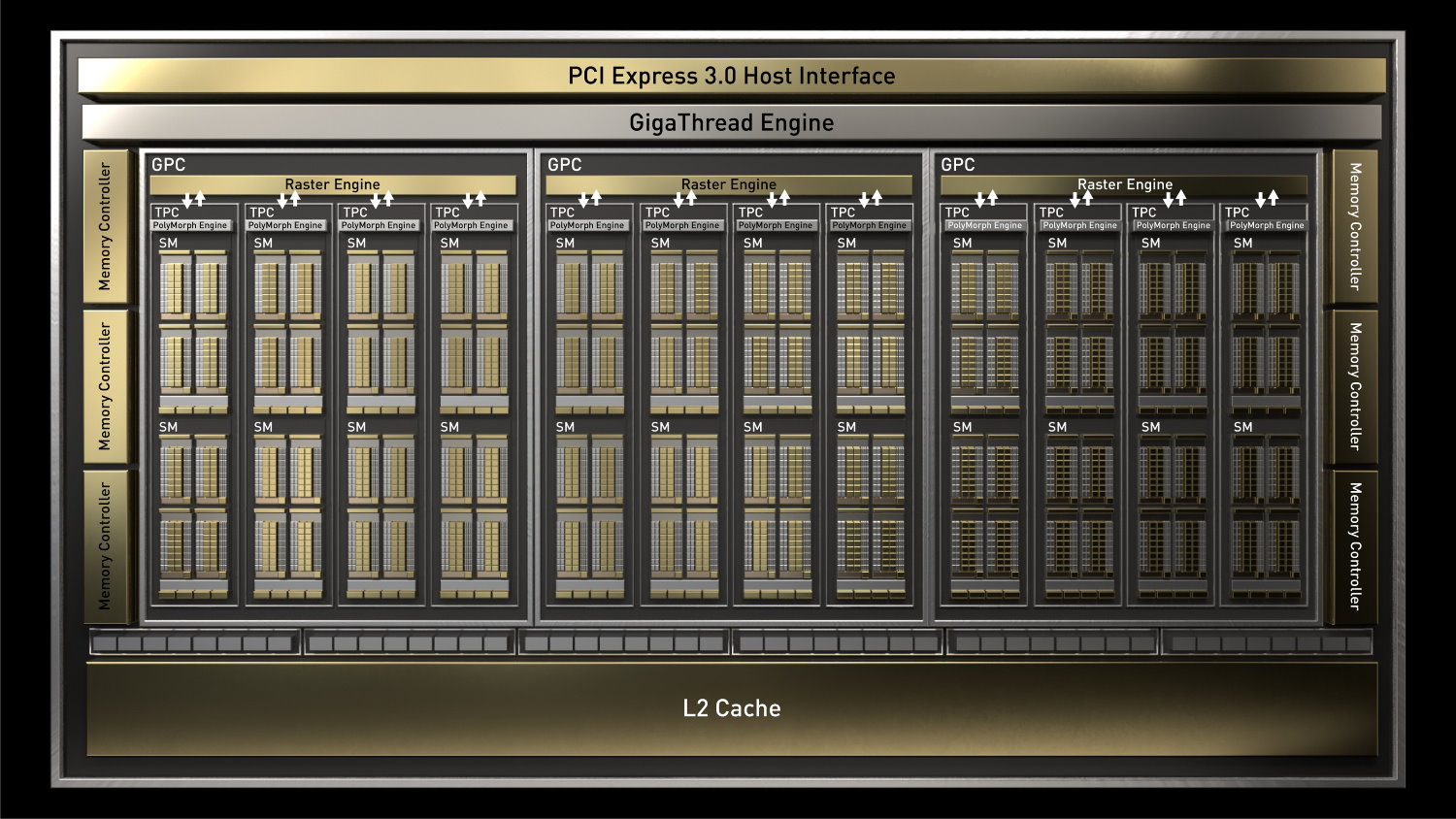
The GTX 1660 Super uses 6GB of GDDR6, as does the 1660 Ti (the 1660 uses GDDR5). The memory uses a 192-bit bus with six 32-bit memory controllers. The 6GB capacity is a sweet spot for 1080p gaming. While 4GB capacity is capable, there are many titles out already (this number grows monthly) that when using 1080p ‘ultra’ settings, eclipses that mark, resulting in negative results as the buffer gets dumped to slower off-card memory. We’ve seen what this can do to the RX 5500 XT in other reviews (even when it is using the faster PCIe 4.0 x16 slot).
The MSI GTX 1660 Super Gaming X we're looking at here comes with a 1,530 MHz base clock and 1,750 MHz (14 Gbps GDDR6 effective) memory clock. The boost clock is listed as 1,830 MHz, 45 MHz above the reference specification. TDP on the reference card is listed as 126W, so this model may use a bit more. MSI suggests a 450W or larger power supply.
The TU116 GPU core includes the Turing NVENC encoder, rather than the Volta encoder included in the original GTX 1650 and the TU117 chip. NVENC encoding on the Turing-based cards decreases CPU utilization and improves performance, especially with higher-resolution encoding and decoding.
Below is a complete list of specifications for the budget range of Nvidia GPUs.
Get Tom's Hardware's best news and in-depth reviews, straight to your inbox.
| Header Cell - Column 0 | Geforce GTX 1650 | Geforce GTX 1650 Super | GeForce GTX 1660 | MSI GTX 1660 Super Gaming X |
|---|---|---|---|---|
| Architecture (GPU) | Turing (TU117) | Turing (TU116) | Turing (TU116) | Turing (TU116) |
| ALUs / Stream Processors | 896 | 1280 | 1408 | 1408 |
| Peak FP32 Compute (Based on Typical Boost) | 2.9 TFLOPS | 4.4 TFLOPS | 5 TFLOPS | 5 TFLOPS |
| Tensor Cores | N/A | N/A | N/A | N/A |
| RT Cores | N/A | N/A | N/A | N/A |
| Texture Units | 56 | 80 | 88 | 88 |
| ROPs | 32 | 32 | 48 | 48 |
| Base Clock Rate | 1485 MHz | 1530 MHz | 1530 MHz | 1530 MHz |
| Nvidia Boost/AMD Game Rate | 1665 MHz | 1725 MHz | 1785 MHz | 1830 MHz |
| AMD Boost Rate | N/A | N/A | N/A | N/A |
| Memory Capacity | 4GB GDDR5 | 4GB GDDR5 | 6GB GDDR5 | 6GB GDDR5 |
| Memory Bus | 128-bit | 128-bit | 192-bit | 192-bit |
| Memory Bandwidth | 128 GB/s | 192 GB/s | 192 GB/s | 336 GB/s |
| L2 Cache | 1MB | 1.5MB | 1.5MB | 1.5MB |
| TDP | 75W | 100W | 120W | 120W |
| Transistor Count | 4.7 billion | 6.6 billion | 6.6 billion | 6.6 billion |
| Die Size | 200 mm² | 284 mm² | 284 mm² | 284 mm² |

Design
The MSI GTX 1660 Super Gaming X measures in at 9.7 x 5 x 1.6-inches, which makes this a dual-slot card. Since it is a true two-slot solution, you will be able to use the slot below so long as whatever is plugged in there doesn’t protrude above the slot line, as space in between will be tight. The card is by all accounts full-size, running almost the full width of an ATX motherboard with its height just barely sticking up above PCIe expansion slot height. But it's compact enough that it should fit in most non-SFF systems. As always though, be sure to check your chassis specifications before buying.

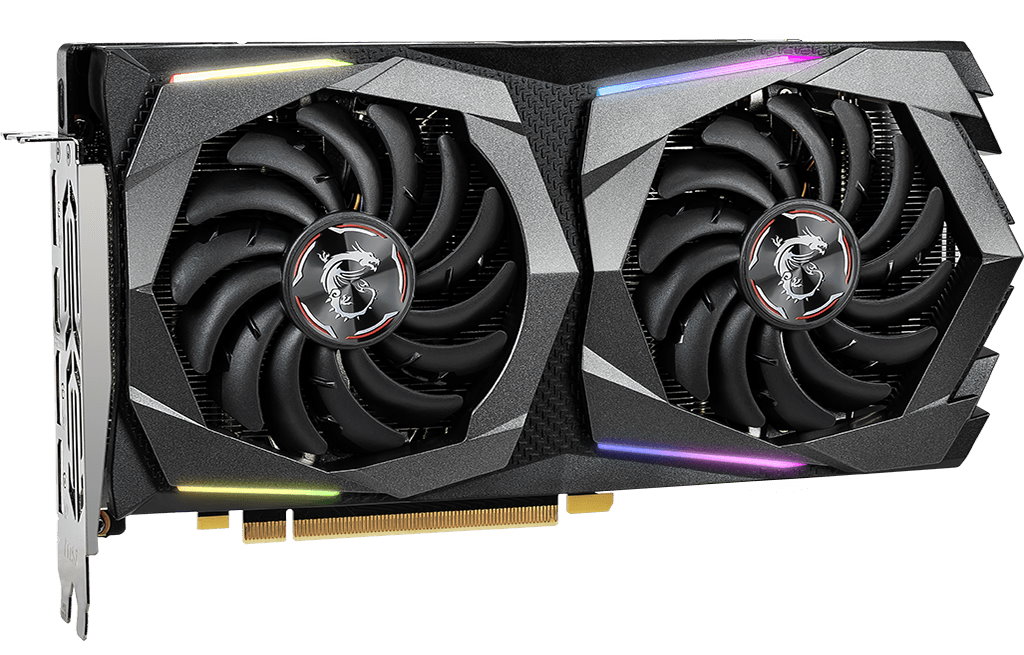

The card’s Twin Frozr 7 cooler sports a black shroud around the two large fans. The plastic cover uses sharp angles, along with a chevron-like pattern between them. Also located on the front are four tastefully implemented RGB LEDs that sit above and below the two fans. In addition, the top of the card also uses RGB lighting, which illuminates the MSI Twin Frozr 7 writing along with the gaming dragon. Protecting the back of the card is a simple backplate.
The card has a fair amount of style and RGB glow, but it won’t stick out like a spotlight. Its black-and-grey design should blend in with most build themes.
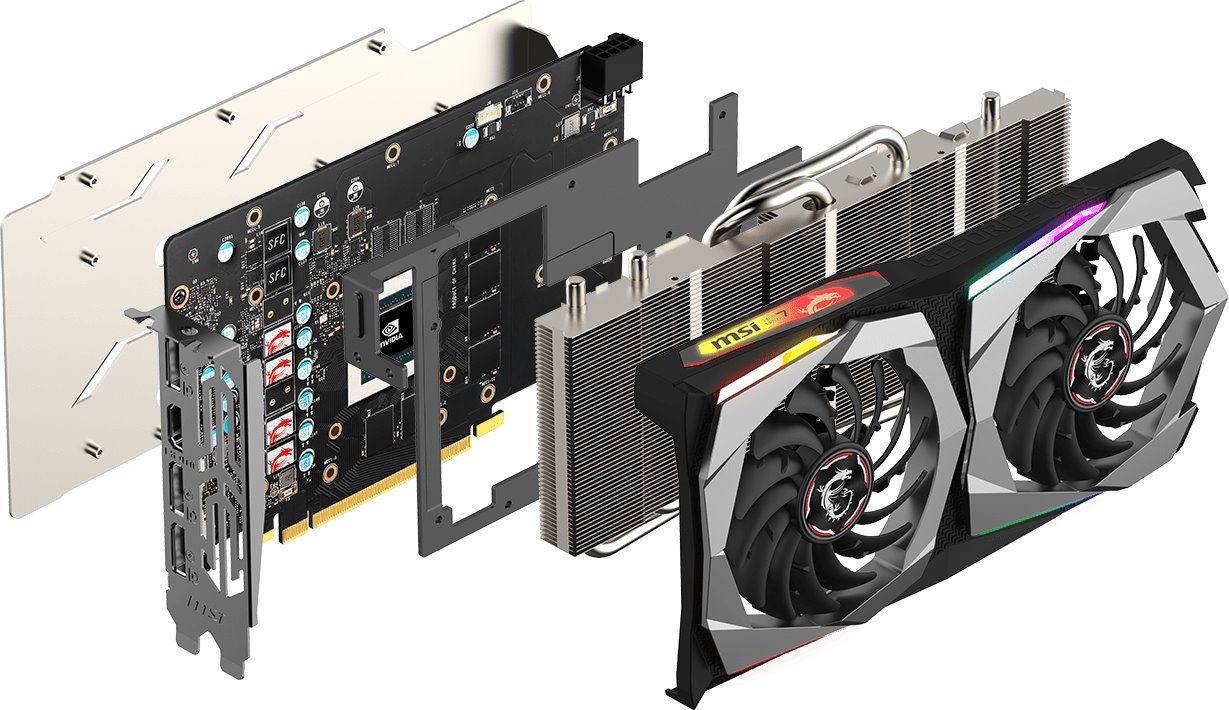
The Twin Frozr 7 cooler was able to keep this card cooler than EVGA’s solution and its beefier 2+ slot cooler, all while being whisper quiet throughout our testing.
MSI’s Twin Frozr 7 sports dual 90mm fans to get air across the heatsink. The Torx fan 3.0 uses a dispersion type fan blade that is specially curved, which MSI says accelerates airflow and increases its effectiveness. MSI implements its Zero Frozr technology here, so that the fans remain off on idle and low loads. This allows for complete silence on the desktop or light activity.
The heatsink below the fans is large, with a relatively dense fin array and runs the entire length -- and most of the height -- of the card. It uses a nickel-plated copper base plate to mate to the die to the heatsink. Just above the base plate are three s-shaped heat pipes, each making two passes through the fin stack. The Memory and VRMs are cooled by a simple black baseplate.
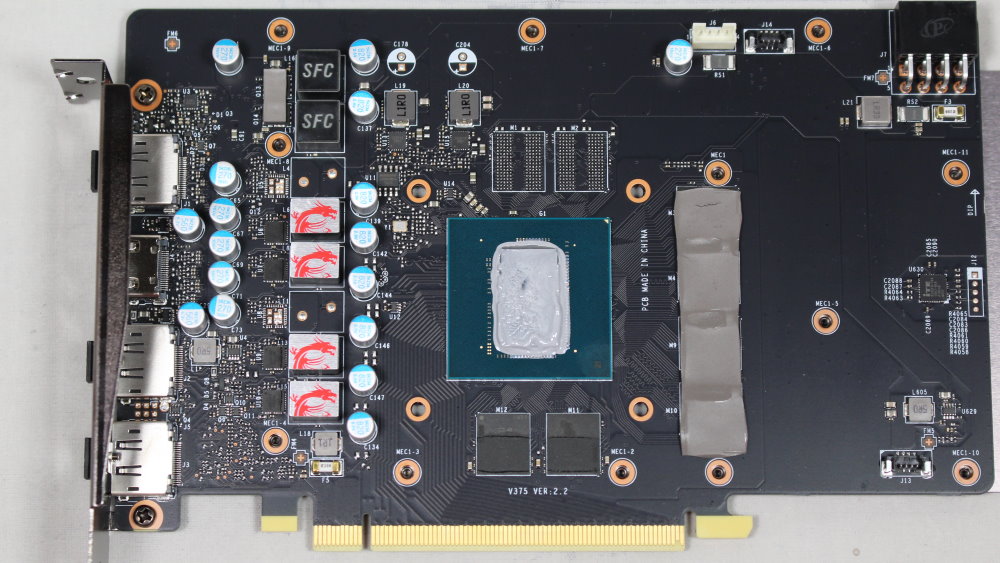
Taking a closer look at the power delivery, the Gaming X uses a 4+2 configuration, with four phases for the GPU and two for the memory. The GPU voltage is controlled by an OnSemi NCP81610 controller with a total of eight channels -- no doublers are in use. The MOSFETs are also OnSemi brand NCP302045 DrMOS. Delivering power to the capable (but not overbuilt) VRMs is a single 8-pin PCIe connector. Combined with the PCIe slot, a total of 225W of in-spec power will be delivered.
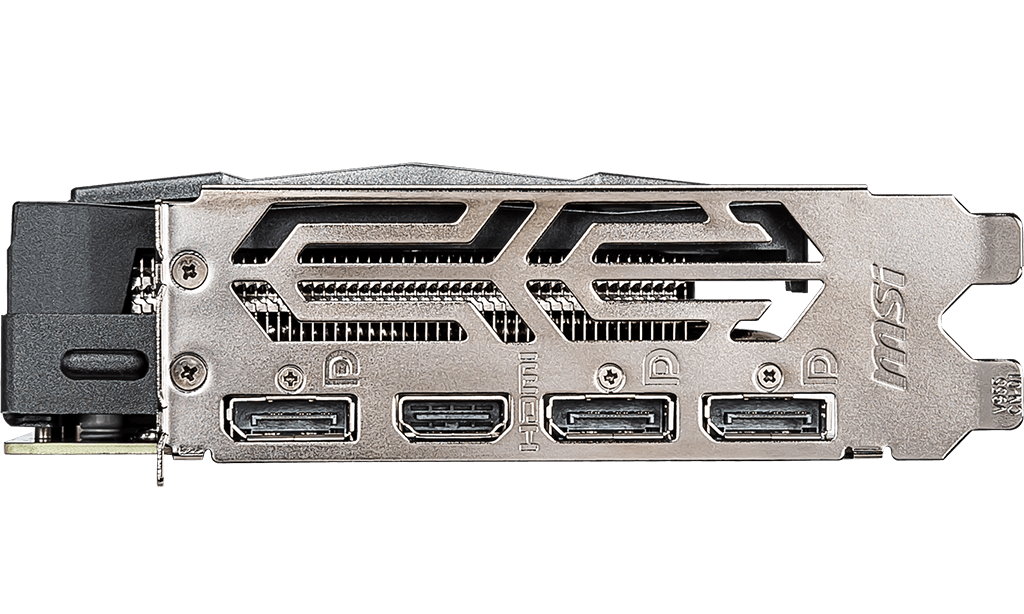
Connectivity on this card consists of four total ports: three v1.4a DisplayPorts, which supports lossless DSC and 8k@30 Hz using a single cable or 8k@60 Hz with DSC enabled. In addition to that is a single HDMI (2.0b) port.
How We Tested MSI’s GTX 1660 Super Gaming X
Recently, we’ve updated our GPU test system to a new platform and swapped from a six-core i7-8086K to an eight-core Core i9-9900K. The CPU sits in an MSI Z390 MEG Ace motherboard, along with 2x16GB Corsair DDR4 3200 MHz CL16 RAM (CMK32GX4M2B3200C16). Keeping the CPU cool is a Corsair H150i Pro RGB AIO along with a 120mm Sharkoon fan for general airflow across the test system. Storing our OS and gaming suite is a single 2TB Kingston KC2000 NVMe PCIe 3.0 x4 drive.
The motherboard was updated to the latest (at this time) BIOS (version 7B12v16) from August 2019. Optimized defaults were used to set up the system. We then enabled the memory’s XMP profile to get the memory running at the rated 3200 MHz CL16 specification. No other changes or performance enhancements were enabled. The latest version of Windows 10 (1909) was used and is fully updated as of December 2019.
As time goes on we continue to build our database of results back up based on this test system. For now, we will include GPUs that are close in performance to the card that is being reviewed. Here we have a Zotac GTX 1660 Amp, EVGA GTX 1660 Super SC Ultra, and the EVGA GTX 1660 Ti XC. Representing AMD, in this case, is an XFX RX 590 Fat Boy, and Gigabyte RX 5500 XT Gaming OC 8G.
Our list of test games is currently Tom Clancy’s The Division 2, Ghost Recon: Breakpoint, Borderlands 3, Gears of War 5, Strange Brigade, Shadow of The Tomb Raider, Far Cry 5, Metro: Exodus, Final Fantasy XIV: Shadowbringers, Forza Horizon 4 and Battlefield V. These titles represent a broad spectrum of genres and APIs which gives us a good idea of the relative performance difference between the cards. We’re using driver build 441.20 for the Nvidia cards and Adrenalin 2020 Edition 20.1.1 for AMD cards.
We capture our frames per second (fps) and frame time information by running OCAT during our benchmarks. In order to capture clock and fan speed, temperature, and power, GPUz's logging capabilities are used. Soon we’ll resume using the Powenetics-based system used in previous reviews as soon as the equipment is ready.
MORE: Best Graphics Cards
MORE: Desktop GPU Performance Hierarchy Table
MORE: All Graphics Content
Current page: Features and Specifications
Next Page Performance Results: 1920 x 1080 (Ultra)
Joe Shields is a Freelance writer for Tom’s Hardware US. He reviews motherboards.